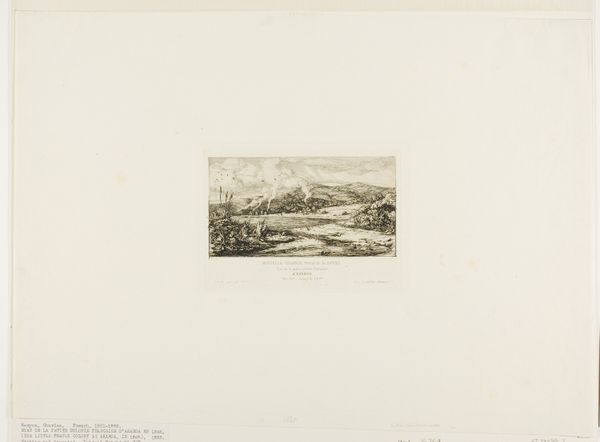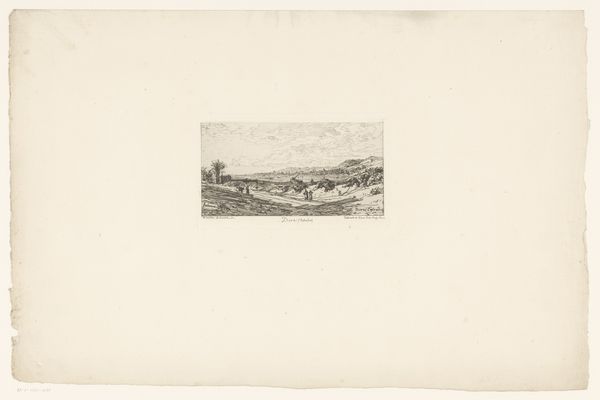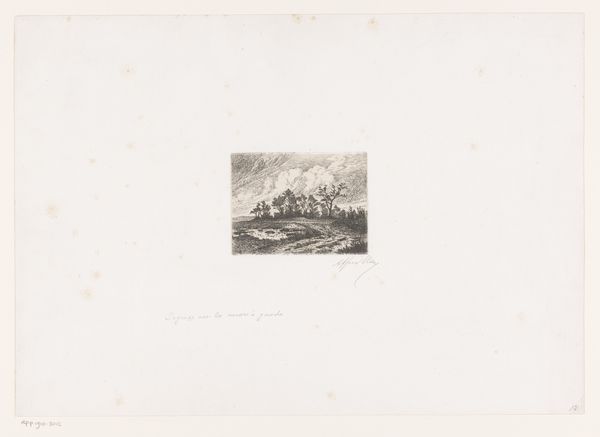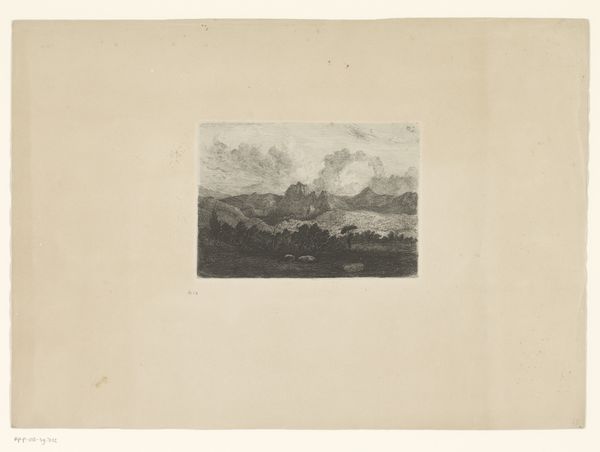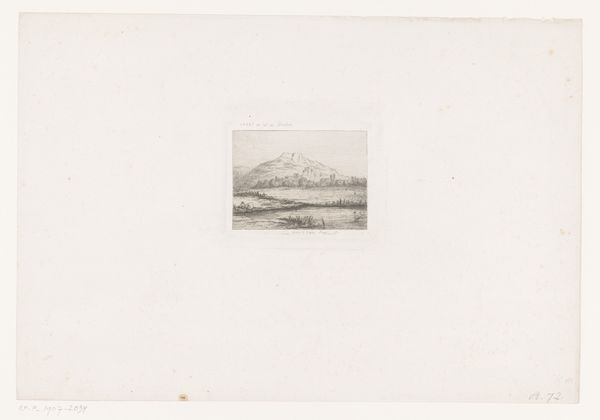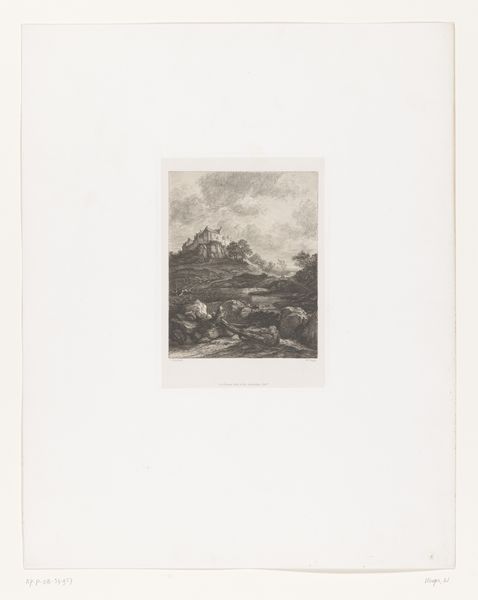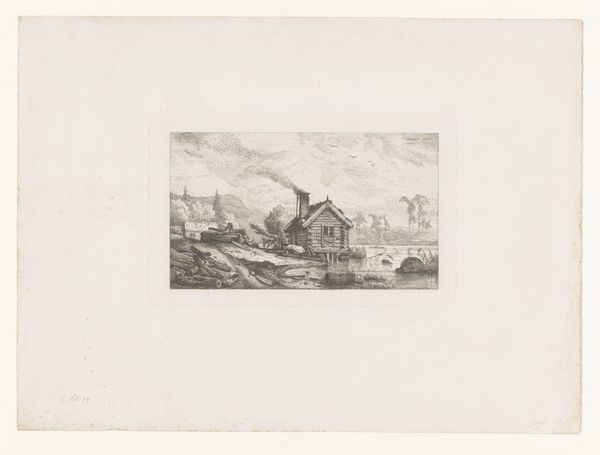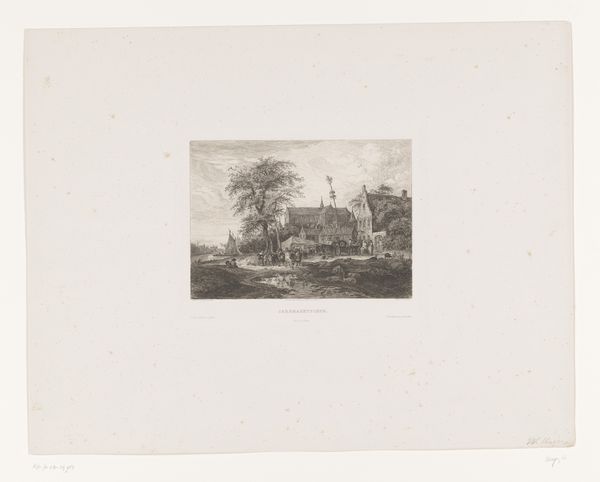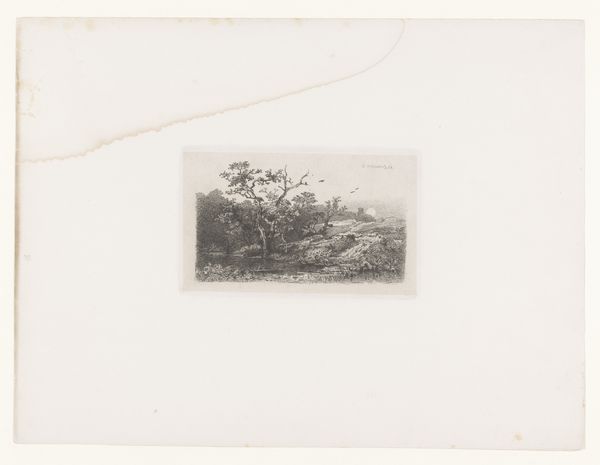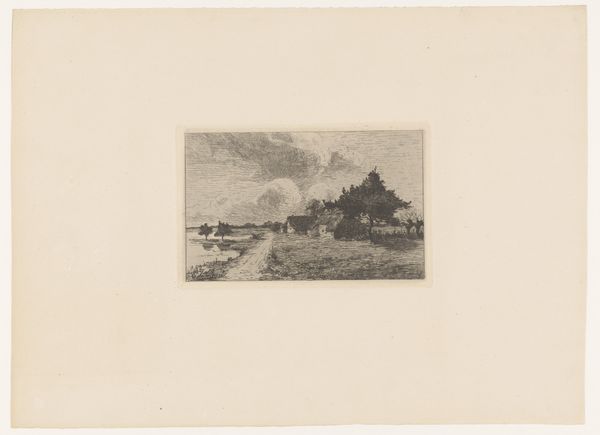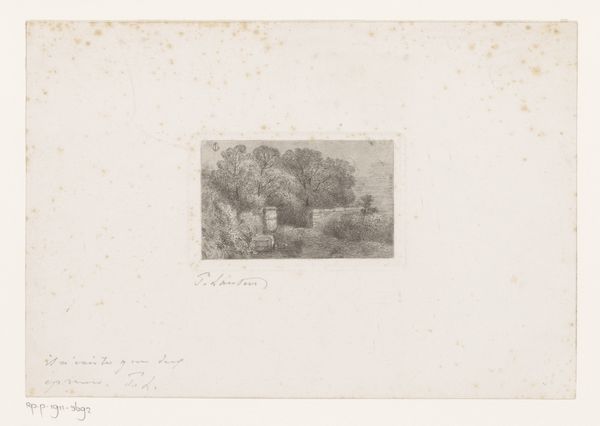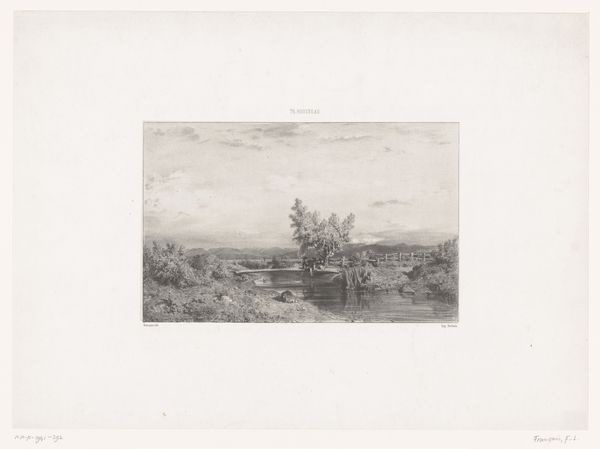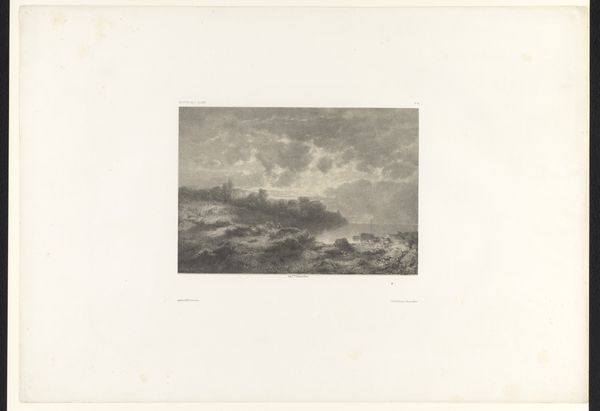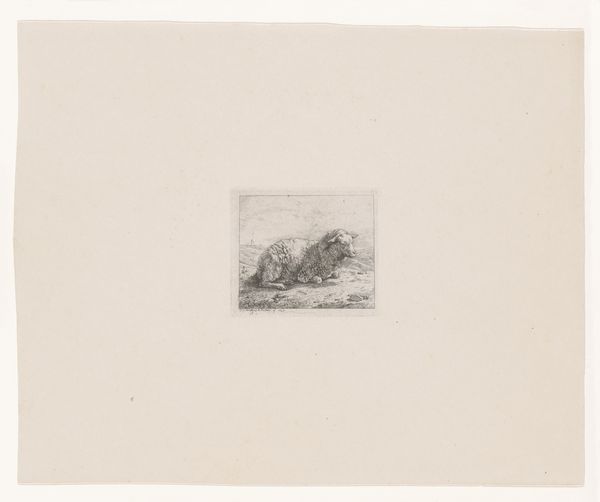
#
pencil drawn
#
photo of handprinted image
#
light pencil work
#
ink paper printed
#
pencil sketch
#
light coloured
#
old engraving style
#
white palette
#
pencil work
#
watercolor
Dimensions: height 188 mm, width 288 mm
Copyright: Rijks Museum: Open Domain
Curator: What strikes me first about this tiny rendering of Senlis is its miniature scale—almost as if a secret world is being offered. Editor: Indeed. This delicate piece, known as "Gezicht op Senlis", likely created between 1635 and 1680, resides in the Rijksmuseum. Although the artist is anonymous, its careful rendering rewards closer viewing. Curator: Absolutely. The linear precision achieved through, what seems to be, very fine pencil work gives clarity. There is remarkable depth given its dimensions. Note how each line and tonal variation contributes to the atmospheric perspective. The overall impression leans on carefully calibrated marks, wouldn't you agree? Editor: Undoubtedly, but the image exists as more than an exercise of aestheticism. "Gezicht op Senlis" could very well function as a projection of power during a period of evolving statehood, a time of topographical surveys which would bolster assertions of property and regional hegemony. Senlis, after all, carried significance as a historical epicenter north of Paris. Curator: An interesting consideration. Perhaps the sketch’s precise execution can be attributed to a conscious projection of stability, in relation to societal anxiety. I see a visual system which adheres to logic: note the light, how its consistent direction gives visual harmony... Editor: Yet, this same system normalizes visual space for political intent; what seems harmless and aesthetic has socio-political roots and reflects a very specific agenda to control its rendering of reality, what some would claim is never neutral! Curator: So, despite being anonymous, this artist may have operated under specific conditions dictated by their place in culture and society? Editor: Most definitely! This makes it all the more interesting as a case study, offering much to contemplate regarding the dynamics between art, vision, and sociopolitical life. Curator: A final thought: the scale may amplify how each calculated tonal mark holds great intentionality. Editor: An assessment I fully appreciate after reconsidering it. Thank you for your analysis of it!
Comments
No comments
Be the first to comment and join the conversation on the ultimate creative platform.
